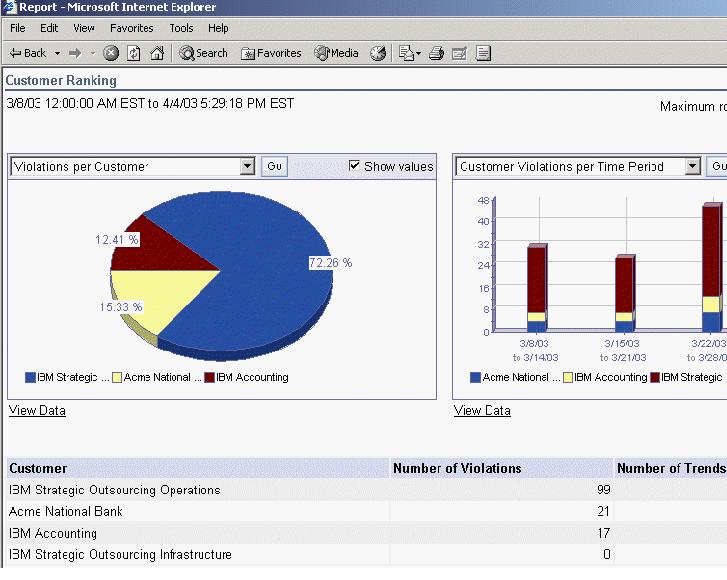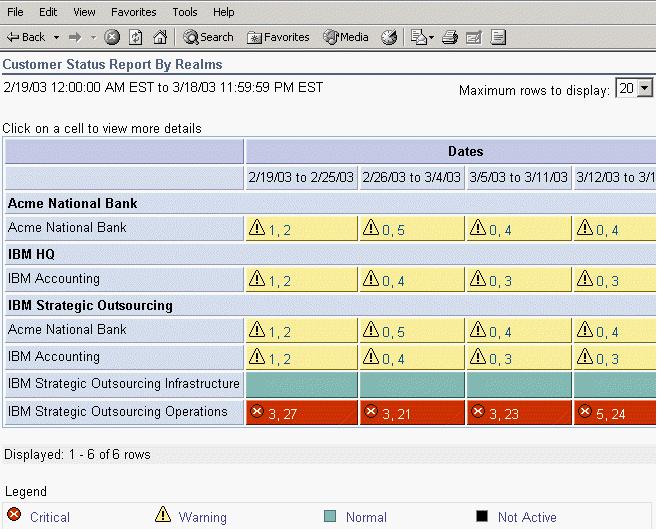| Tool Mentor: TSLA - Monitor and Report Service Level Achievements |
 |
|
| Related Elements |
|---|
ContextTool mentors explain how a tool can perform tasks, which are part of ITUP processes and activities. The tasks are listed as Related Elements in the Relationships section. You can see the details of how processes and activities are supported by this tool mentor, by clicking the links next to the icons: DetailsTo use IBM® Tivoli® Service Level Advisor to view Service Level Achievements, simply view the Service Level Agreement (SLA) reports to see which SLAs have been breached and which are still within the agreed limits. In addition, Tivoli Service Level Advisor also shows Warnings for agreements that are trending towards a breach state. This feature allows the customer to proactively assess and address problems with the agreement or the agreed-upon service before a breach is made. Tivoli Service Level Advisor uses a drill-down approach to SLA management. To view an overall report, for all SLAs that are grouped by Customer, simply log into the Web-based SLA report management console at: http://<report_server>:<port>/SLMReport The first view of report data that the user sees is in the form of a high-level status report, which gives the viewer an overall summary look at the status of the orders in which they are interested. There are two views of high-level status reports available, depending on the type of user signing on to the Web site:
Clicking on a high-level report cell displays an Overall Report view, which shows additional information on the data that was collected during that report period. Using the Report Type menu, the user can select one of several additional views that display more information about the report data. Another helpful report type is Customer Ranking (see Figure 2). Choosing this selection from the Report Type menu displays the customer SLAs, the number of violations, and the number of trends, ordered by rank. In this view, SLAs that need the most attention move to the top, whereas SLAs running smoothly rank lowest. The ranking makes it easy to see which SLAs might need intervention, and to help the users prioritize their SLAs.
See the Administrator's Guide for IBM Tivoli Service Level Advisor Version 1.2.1 and the IBM TSLA Best Practices Document - Service Level Management for Web Applications for more information. For More InformationFor more information about this tool, click on the link for this tool at the top of this page. |
©Copyright IBM Corp. 2005, 2008. All Rights Reserved. |

